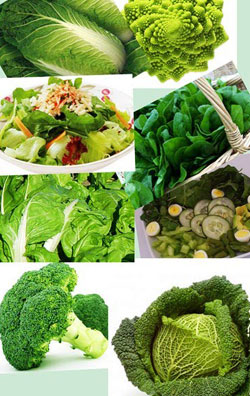
Vegetables are classified on nutritional basis into three – Leafy vegetables, Roots and Tubers and other vegetables. Leafy vegetables are the most nutritious because it contains high amounts of carotene, Riboflavin, Folic acid, Calcium and Iron.
They also contain fibre which helps to prevent constipation and reduce the rate of absorption of dietary cholesterol.
Leafy vegetables such as amaranth, drumstick leaves, spinach, Fenugreek leaves can be easily cultivatedand are inexpensive. They can be easily grown at home. They are best to be consumed when they are fresh and can be stored in fridge to keep them fresh for a longer duration of time.
They can be used to prepare other food items, in the form of stuffing and mixing as small children mostly don’t relish the idea of having leafy vegetables.
The addition of green leafy vegetables in your diet gives out lots of health benefits.Leafy greens are full of vitamins, minerals, and disease-fighting phytochemicals and helps the growth and repair of body tissues. Vitamin E and Vitamin C in leafy vegetables combine to give beautiful skin and healthy hair growth.
Other important health benefits of having leafy vegetables
1) Green leafy vegetables are a good source of fibre, which helps to reduce weight as the consumption would make you feel full and lessens your hunger level. Fibrous food items also contribute to lower your cholesterol and blood pressure.
2) The risk of developing osteoporosis also comes down since some leafy vegetables are rich sources calcium in absorbable form. It also enhances muscle function and manages blood- pressure.
3) Beta-carotene is an important component for your eyes and has antioxidant to support you with lots of health benefits for your skin and body. This element is present in other fruits and vegetables such as collards, spinach, mangoes, carrot, passion fruit etc.
Some of the most commonly consumed green leafy vegetables are:
- Cauliflower: It is a highly nutritious vegetable and contains vitamins such as thiamine(vit B1), riboflavin(B2), niacin, pantothenic acid, pyridoxine and folic acid. It also has essence of omega-3 fatty acids and vitamin K. Cauliflower also serves as a good source of proteins, phosphorus, potassium, vitamin C and manganese both works as powerful antioxidants.
- Cabbage:Highly nutritious vegetable which is low in fat and calories. It is a storehouse of phyto chemicals and acts as a powerful antioxidant and helps body develop resistance against infectious agents and disease causing free radicals. It also contains an adequate amount of minerals like potassium, manganese, iron, and magnesium.
- Broccoli: If broccoli is cooked by steaming, it can provide you with cholesterol-lowering benefits. It is also fibrous to some extent. Broccoli is a good carb and is high in fiber, which aids in digestion, prevents constipation, maintains low blood sugar, and limits overeating by making you feel fuller.
- Spinach: Green leafy spinach leaves contains greater concentrations of vitamin C. Consumrtion of spinach includes improvement in blood glucose control in diabetics, lowering the risk of cancer, blood-pressure and also contributes to proper bone health.
- Coriander leaves: It is basically used for garnishing purpose. Coriander leaves are used at the end of cooking to add a flavour to the curry. They are the best source for carrying out proper digestion. Also it has got high amount of iron supplements thus helps prevent anaemia.





